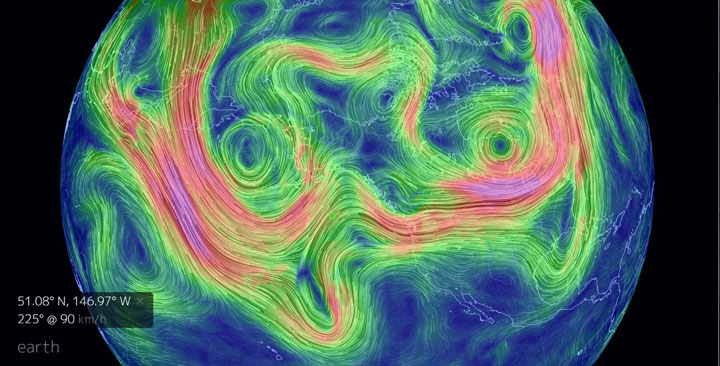Watch above: Canadians will see the return of the polar vortex this weekend as a beast of a storm swirls towards Alaska. Jackson Proskow reports on what can be expected.

TORONTO – Alaska is bracing for a storm that is more intense than 2012’s Superstorm Sandy.
The low pressure system — remnants of Typhoon Nuri — is expected to reach Alaska’s western Aleutian Islands over the weekend.
The storm could be one of the most intensive to ever hit the North Pacific, U.S. National Weather Service (NWS) forecaster Brian Hurley said. The Coast Guard and Alaska state emergency responders were keeping a close eye on its strength.
The weather office also said that hurricane-force winds and waves of up to 15 metres high could be possible for the islands. The system is expected to reach the island chain Friday or Saturday before weakening in the Bering Sea.
But once it makes its way to Alaska, it will mix with cold air as well as the jet stream, pulling frigid Arctic air to the south. That means some chilly days ahead for much of Canada, particularly for the Prairies.
In Edmonton, temperatures are expected to plunge from a daytime high of 3 C on Friday to -11 C by Monday. The normal daytime high is 1 C.
In Saskatoon, temperatures will also near -10 C by Monday.
Ontario and Quebec will also feel colder-than-normal temperatures.
In the U.S. Midwest, the mercury is also expected to drop below normal values.
“It looks like winter’s starting early,” NWS forecaster Bob Oravec said.
Not only are they expecting the cold, snow is coming to areas including the northern Rockies and northern Plains.
The storm’s path includes a busy maritime route for cargo ships travelling to or from Asia, as well as the red king crab fishery made famous by the Discovery Channel reality show Deadliest Catch. Vessels are finding protected harbours or moving away from the path, according to Brett Farrell with the Marine Exchange of Alaska, a non-profit maritime organization. No one in their right mind would stick around that area, he said.
–with files from The Associated Press


Comments